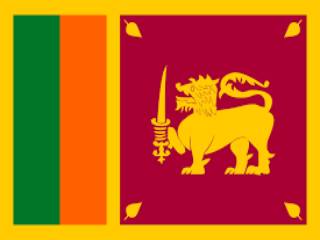Mr. Arun Jaitley give out some thoughts on MS University, Vadodara incident of Mr. Chandramohan.
"The Vadodara incident, in which an art exhibition at the MS University was disturbed by a group of protesters, escalated into a political controversy. The protesters strongly maintained that some of the art objects on display were intended to hurt the religious sentiments of a particular religious denomination. A group of artists, supported actively by political organisations and eulogised by a section of the media, strongly maintained that the protest against the two paintings amounted to moral policing and that it was a suppression of artistic freedom. The debate continued for a few days until the young artist who had sketched the paintings was released on bail.
My normal instincts are against censorship and disruption of art exhibitions. Anxious to study and analyse the real issues in this controversy, I made a conscious effort to investigate as to what the two impugned paintings were. My curiosity was further strengthened by the fact that media organisations that championed freedom of artistic expression, projected the issue in the abstract, without informing viewers and readers what the exact expression of artistic freedom in this case was. My conscious effort led me to discover that the protest was with regard to two paintings whose contents were being censored by the responsible section of the media. I am unsure whether this was deliberate or whether it was an act of responsible journalism to prevent people from viewing an obnoxious piece of art.
… … The question for consideration in Indian society today is whether the right of an individual, including an artist, to express himself with freedom includes his right to commit blasphemy. The most prominent amongst the fundamental rights guaranteed under the Constitution is Article 19(1)(a), which guarantees to a citizen the freedom of speech and expression. This right is not absolute. It is subject to reasonable restrictions, which, amongst others, empower the state to make laws that can restrict the exercise of this right in the interest of public order, decency or morality. This case relates to decency or morality, but let’s ignore that for the moment. The responsibility of maintaining public order prohibits an individual from engaging in actions that may lead to public disorder. The Danish cartoons controversy has clearly revealed that the cartoons were not merely excesses of caricature, but were sufficient to create disorder. Although the cartoons did not have any sexually explicit material, even then they created public disorder globally. Religious sensitivities were ignored. In the present case, it is the level of tolerance of Indian society that protests were limited to one act of slogan shouting at the art exhibition in question. What is objectionable is not the mistaken romanticism of the young artist, but the insistence of responsible sections of the society that artistic freedom would extend to such acts of blasphemy. The mere dressing up of the head of a religious sect in Sirsa with a resemblance to a Sikh Guru is sufficient to create public disorder. Can it be reasonably believed that sexually explicit paintings of Jesus Christ or goddess Durga will have no effect on society?
… …. The proponents of the liberal view argue that artists should have the freedom to give vent to their expression even if the same is blasphemous or offensive to religion. Followers of religions must choose to look in the other direction. That is what normally happens. Except for marginal protests, India does not witness the kind of outrage we saw in the Danish cartoon case. There is no need for any protesting citizen to take the law into his hands. The machinery of law must be allowed to operate in such cases. At the same time, the perversion in the definition of secularism as being synonymous with majority-bashing must end. This perversion was visible in the Vadodara incident. The strategy was — don’t let the people know what the contents of the two paintings are. Carry on the debate on artistic freedom in the abstract and criticise the whole idea of moral policing. Society does not need moral policemen. It can do well without those who pass on blasphemy as a part of their artistic freedom."
Source:http://lawandotherthings.blogspot.com/2007/05/jaitley-on-legal-boundaries-of-artistic.html
Related HJS section :
> Learn Hinduism
> Defamations




